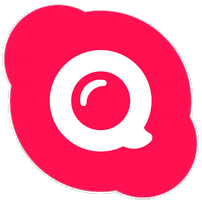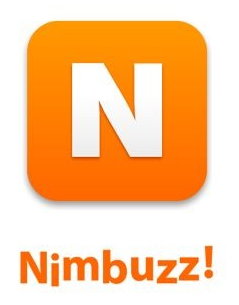
Microsoft Outlook is a personal information manager software system from Microsoft, available as a part of the Microsoft Office and Microsoft 365 software suites. Though primarily an email client, Outlook also includes such functions as calendaring, task managing, contact managing, note-taking, journal logging and web browsing, and has also become a popular email client for many businesses.

Salesforce, Inc. is an American cloud-based software company headquartered in San Francisco, California. It provides customer relationship management (CRM) software and applications focused on sales, customer service, marketing automation, e-commerce, analytics, and application development.
Automattic Inc. is an American global distributed company which was founded in August 2005 and is most notable for WordPress.com, as well as its contributions to WordPress. The company's name is a play on founder Matt Mullenweg's first name and automatic.

Loïc Le Meur is a French entrepreneur and blogger. He served as Executive Vice President EMEA at software company Six Apart after merging French blogging company Ublog with Six Apart in July 2004. In late 2006 Le Meur became a public backer of French presidential candidate Nicolas Sarkozy and joined Sarkozy's campaign team as an advisor on Internet-related topics.
Ping.fm was an advertising-supported social networking and micro-blogging web service that enabled users to post to multiple social networks simultaneously.

Ribbit was a telecommunications company based in Mountain View, California. It was acquired by BT Group on July 29, 2008 for $105 million.

TweetDeck is a social media dashboard application for management of Twitter accounts. Originally an independent app, TweetDeck was subsequently acquired by Twitter Inc. and integrated into Twitter's interface. It has long ranked as one of the most popular Twitter clients by percentage of tweets posted, alongside the official Twitter web client and the official apps for iPhone and Android.

Skype Qik was a video messaging service by Skype. It was created by the company, Skype Technologies, who acquired Qik. The service, offered for Android, iOS, and Windows Phone devices, allowed users to exchange video messages between individuals or within a group.
ooVoo was a video chat and a messaging app developed by ooVoo LLC and owned by Krush Technologies, LLC. ooVoo had applications for Android, iOS, Mac OS X, Microsoft Windows, Windows Phone, and Facebook. The original Microsoft Windows app was released in 2007. It was discontinued on November 25, 2017.

Facebook is a social networking service originally launched as FaceMash on October 28, 2003, before changing its name to TheFacebook on February 4, 2004. It was founded by Mark Zuckerberg and college roommates and fellow Harvard University students, in particular Eduardo Saverin, Andrew McCollum, Dustin Moskovitz, and Chris Hughes. The website's membership was initially limited by the founders to Harvard students, but was expanded to other colleges in the Boston area, the Ivy League, and gradually most universities in the United States and Canada, corporations, and by September 2006, to everyone with a valid email address along with an age requirement of being 13 and older.
Flipboard is a news aggregator and social network aggregation company based in Palo Alto, California, with offices in New York, Vancouver, and Bejiing. Its software, also known as Flipboard, was first released in July 2010. It aggregates content from social media, news feeds, photo sharing sites, and other websites, presents it in magazine format, and allows users to "flip" through the articles, images, and videos being shared. Readers can also save stories into Flipboard magazines. As of March 2016 the company claims there have been 28 million magazines created by users on Flipboard. The service can be accessed via web browser, or by a Flipboard application for Microsoft Windows and macOS, and via mobile apps for iOS and Android. The client software is available at no charge and is localized in 21 languages.

WhatsApp is an internationally available freeware, cross-platform, centralized instant messaging (IM) and voice-over-IP (VoIP) service owned by US tech conglomerate Meta. It allows users to send text and voice messages, make voice and video calls, and share images, documents, user locations, and other content. WhatsApp's client application runs on mobile devices, and can be accessed from computers. The service requires a cellular mobile telephone number to sign up. In January 2018, WhatsApp released a standalone business app called WhatsApp Business which can communicate with the standard WhatsApp client.

Messenger is a proprietary instant messaging app and platform developed by Meta Platforms. Originally developed as Facebook Chat in 2008, the company revamped its messaging service in 2010, released standalone iOS and Android apps in 2011, and released standalone Facebook Portal hardware for Messenger calling in 2018. In April 2015, Facebook launched a dedicated website interface, Messenger.com, and separated the messaging functionality from the main Facebook app, allowing users to use the web interface or download one of the standalone apps. In April 2020, Facebook released a Messenger desktop app for Windows and macOS.
140 Proof is an advertising company that uses social data from many sources in targeting relevant ads based on consumers' interests as indicated by their social activity across networks.
Base CRM is an enterprise software company based in Mountain View, California with R&D offices located in Kraków, Poland. It provides a web-based all-in-one sales platform that features tools for email, phone dialing, pipeline management, forecasting, reporting and more. Base's platform is available on iOS and Android, and was the first full native CRM Android app available. On September 10, 2018 Base was acquired by Zendesk and later rebranded as Zendesk Sell.

Nimbuzz was a proprietary cross-platform instant messaging and voice-over-IP provider and aggregator for smartphones, tablets and personal computers developed by Kuraakani Online Private Limited, with the origins of its technology dating back to the early 2000s. As of March 2013, Nimbuzz had 150 million users in 200 countries. By April 2014, Nimbuzz was growing by more than 210,000 new registrations per day. In October 2014, now with over 200 million users, New Call acquired 70% of Nimbuzz, valuing the app at $250 million. Under CEO Vikas Saxena's leadership from March 2015, the Nimbuzz suite of applications enabled users to enjoy free calls, instant messaging, social-network games, file sharing, and social networking on their mobile device. In addition, Nimbuzz offered discounted calling rates to most countries in the world. The platform processed more than a billion call minutes and in excess of 100 billion messages a month.
Pheed was a mobile pay-per-view technology and social networking service founded by O.D. Kobo, Tony DeNiro, and Phil Haus. In March 2014, 18 months from launch, a subsidiary of América Móvil acquired the service for $40 million in cash and stock.

Sunrise is a discontinued electronic calendar application for mobile and desktop. The service was launched in 2013 by designers Pierre Valade and Jeremy Le Van. In October 2015, Microsoft announced that they had merged the Sunrise Calendar team into the larger Microsoft Outlook team where they will work closely with the Microsoft Outlook Mobile service.

Eric Thich Vi Ly is an American entrepreneur and investor. Ly was co-founder of LinkedIn, a social networking site designed specifically for the business community, where he served as its founding chief technology officer. He is currently the CEO and founder of a blockchain based trust protocol Hub.
Comparison of user features of messaging platforms refers to a comparison of all the various user features of various electronic instant messaging platforms. This includes a wide variety of resources; it includes standalone apps, platforms within websites, computer software, and various internal functions available on specific devices, such as iMessage for iPhones.












